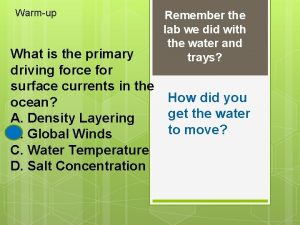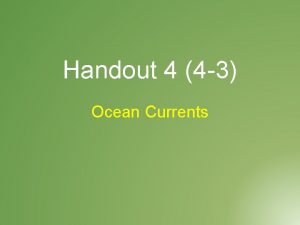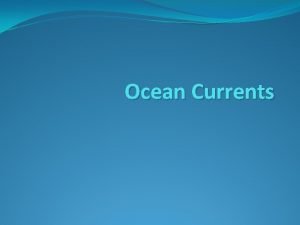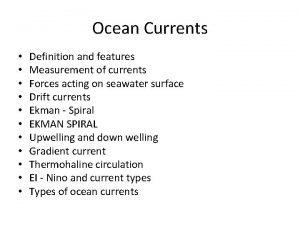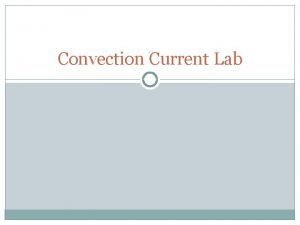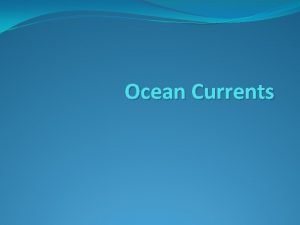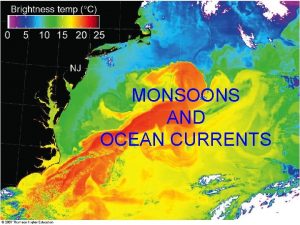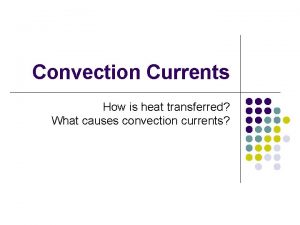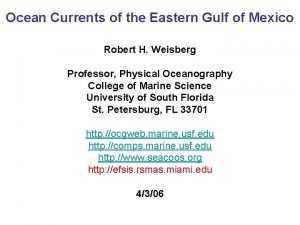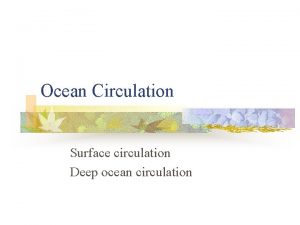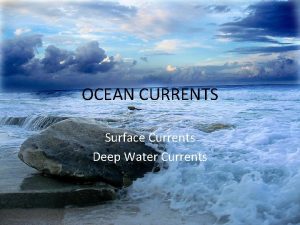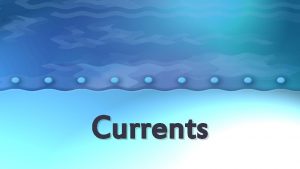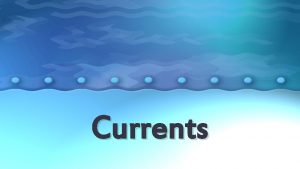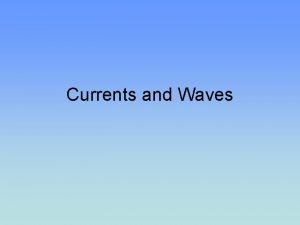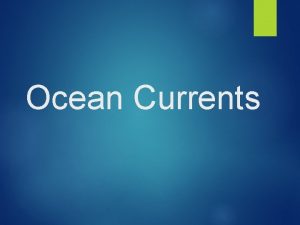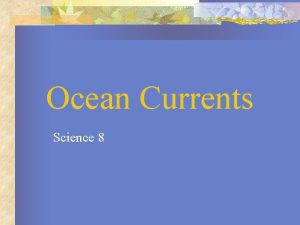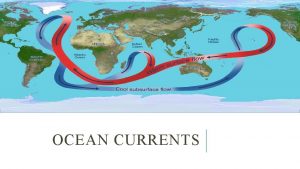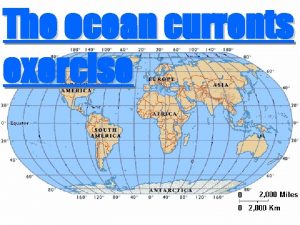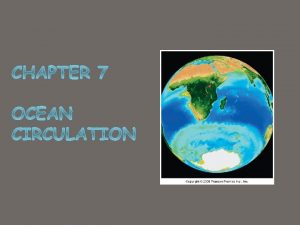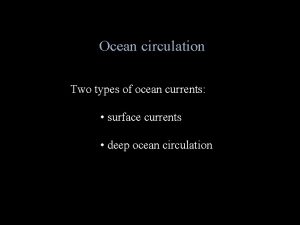Ocean Circulation Chapter 16 Section 1 Surface Currents


















- Slides: 18

Ocean Circulation Chapter 16, Section 1

Surface Currents Ocean Currents – masses of ocean water that flow from one place to another n Surface Currents – movements of water that flow horizontally in the upper part of the ocean’s surface n Surface currents develop from friction between the ocean and the wind that blows across its surface n Some water movements are responses to local or seasonal influences, others are more permanent and extend over large portions of the ocean n

Wind Friction

Gyres n n n Gyre – huge circular-moving current systems which dominate the surfaces of the oceans The 5 main ocean gyres: the North Pacific Gyre, the South Pacific Gyre, the North Atlantic Gyre, the South Atlantic Gyre, and the Indian Ocean Gyre Coriolis Effect – the deflection of currents away from their original course as a result of Earth’s rotation Because of Earth’s rotation, currents are deflected to the right in the Northern Hemisphere and to the left in the Southern Hemisphere Therefore, gyres flow in opposite directions in the two hemispheres

Surface Ocean Currents and Gyres

Ocean Currents and Climate n n When currents from low-latitude regions move into higher latitudes, they transfer heat from warmer to cooler areas of Earth The Gulf Stream, for example, brings warm water from the equator up to the North Atlantic Current (allowing Europe to be warmer in the winter than expected for those latitudes) As cold water currents move towards the equator, they help moderate the warm temperatures of adjacent land areas Ocean currents also play a major role in maintaining Earth’s heat balance

Gulf Stream

Upwelling n n Upwelling – the rising of cold water from deeper layers to replace warmer surface water Upwelling is a common wind-induced vertical movement Coastal upwelling occurs in areas when winds blow toward the equator and parallel to the coast, this combined with the Coriolis effect cause surface waters to move away from shore and be replaced by water from below the surface Upwelling brings greater concentrations of dissolved nutrients, such as nitrates and phosphates to the ocean surface

California Coastal Upwelling

Density Currents – vertical currents of ocean water that result from density differences among water masses n Denser water sinks and slowly spreads out beneath the surface n An increase in seawater density can be caused by a decrease in temperature or an increase in salinity n Density changes due to salinity variations are very important in the polar regions, where water temperature remains low and relatively n

Density Currents

High Latitudes n n n Most water involved in deep-ocean density currents begins in high latitudes at the surface The surface waters become cold, and its salinity increases as sea ice forms The water will than sink, initiating deep-ocean density currents The water’s temperature and salinity will remain relatively unchanged while it is in the deep-ocean currents By knowing the temperature, salinity, and density of a water mass, scientists are able to map the slow circulation of water mass through the ocean

Sea Ice

Evaporation Density currents can also result from increased salinity of ocean water due to evaporation n In the Mediterranean Sea, conditions exist where a warm, high salinity water will sink and push its way out to the Atlantic Ocean n This water has a salinity level of 38‰, compared to the Atlantic having a salinity of 35‰, making the Mediterranean water much more dense n Scientists have tracked this water mass as far south as Antarctica n

Mediterranean Sea

A Conveyor Belt A simplified model of ocean circulation is similar to a conveyor belt that travels from the Atlantic Ocean through the Indian and Pacific oceans and back again n Warm water in the ocean’s upper layers flow towards the poles n When water reaches the poles its temperature drops and salinity increases, it sinks to the bottom and moves towards the equator n The water will eventually upwells at warmer latitudes to complete the circuit n

Global Conveyor Belt

Assignment Read Chapter 16, Section 1 (pg. 448 -453) n Do Section 16. 1 Assessment #1 -7 (pg. 453) n
 What is deep current
What is deep current What is the primary driving force of surface ocean currents
What is the primary driving force of surface ocean currents Surface ocean currents
Surface ocean currents Single vs double circulatory system
Single vs double circulatory system Single circulation and double circulation
Single circulation and double circulation Pulmonary arteriole
Pulmonary arteriole Slowing atlantic ocean circulation
Slowing atlantic ocean circulation Ocean currents waves and tides
Ocean currents waves and tides Ocean currents vocabulary
Ocean currents vocabulary Currents definition
Currents definition Convection currents definition
Convection currents definition Why are tropical climates so hot brainpop
Why are tropical climates so hot brainpop Ocean currents
Ocean currents Ocean currents vocabulary
Ocean currents vocabulary Ocean currents
Ocean currents Cenozoic mammals
Cenozoic mammals Cause of convection
Cause of convection Rubber ducks ocean currents activity
Rubber ducks ocean currents activity Ocean currents gulf of mexico
Ocean currents gulf of mexico

